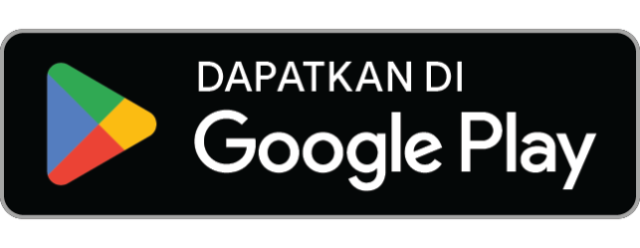The Covid-19 pandemic has changed the learning paradigm a lot. One of the impacts is the increasing trend of online learning through learning management systems (LMS).
The use of LMS for online learning is not only done by educational institutions such as schools, universities and tuitions but also by companies to conduct employees learning and development (L&D) program. Several world-scale companies that use LMS include Google, IBM, Coca-Cola, and Amazon. LMS continues to be widely used until the post-pandemic period because it can increase engagement in the training or learning process, productivity, and employee retention.
However, how much an LMS cost? Is your company adequately prepared to adopt an LMS? Check out the explanation in this article.
Variations of LMS pricing models
According to Raccoon Gang, there are at least five different LMS pricing models. They are pay per learner, pay per active user, pay as you go, license fee (subscription), and free to use.
Pay pay per learner
In this payment model, the fee is based on the number of learners who use the LMS. The more learners you plan to add to the system, the higher the monthly payment for the LMS will be. An example of the Pay Per Learner model is offered by Adobe Captivate Prime. For schools with a fixed number of students or companies with a steady number of employees, Adobe Captivate Prime is great because it has a monetization model. For each registered user, the fee is around $4 per month.
Pay per active learner
This payment model is similar to the per learner payment model. However, we can register an unlimited number of learners. Payment will only be made for the number of learners logged in during the payment period.
Even so, there is a condition that must be considered because the payment model per active user is usually offered in the form of several packages. Let’s say you have chosen a plan that is suitable for $500 per month for 300 students. However, if your number of students has not reached 300, for example at 280, you will still have to pay $500.
Pay as you go
The pay as you go model is considered flexible because payments are made based on the institution’s workload when using the LMS. The fees are lower during periods of fewer workload, for example, because there are fewer learners and fewer activities in the LMS. However, you must pay more during peak periods such as new enrollments, the start of the school year, or when there is quite a lot of activity in the LMS.
License Payment
The license payment model provides a fixed price quote for each month. The price variations offered for each package are made based on differences in the number of features, storage capacity, etc. The license fees offered by each provider are known to be quite high.
Free
This type of LMS includes an open-source learning management system that is free to customize. One such example is Open edX. An open-source LMS is an excellent choice for those who want maximum platform flexibility.
However, it should be noted that the basic configuration is free. However, the level of technological complexity is high enough that it requires good technical knowledge to install and customize. If you don’t have qualified IT resources, be prepared to invest in LMS installation, customization, and maintenance. You should contact and hire a team of professional developers.
Popular LMS Fees, Moodle Vs. Open Edx
After discussing various variations of LMS payment models, we will discuss the costs of two popular LMSs in educational institutions and companies. They are Moodle and Open edX.
Moodle
The price for using a Moodle LMS can vary depending on factors such as whether you want to self-host or use Moodle hosting provided by a third party, the number of users or students who will be using the platform, and any additional features or plug-ins you want to add to your moodle.
If you decide to host Moodle yourself, costs may include hardware like servers, Moodle license, development and maintenance, hosting, and bandwidth costs. However, if you choose to use Moodle hosting provided by a third party, the cost may vary depending on the hosting provider you choose. For example, some Moodle hosting providers, such as MoodleCloud, offer free plans for small organizations with limited features, while other hosting providers offer more complete packages for a higher price.
In general, the cost of using Moodle can vary from free to several thousand dollars per year, depending on your hosting choice and the features you choose. Pricing packages per year based on the number of users offered by Moodle include a starter package of $ 110 for 50 users, a mini package $ 210 for 100 users, up to a large package of $ 1,470 for 1000 users.
Open edX
OpenEdX is an LMS developed by the Massachusetts Institute of Technology and Harvard University. The main goal of this platform is to provide educators and educational institutions with the most flexible and convenient tools for creating and managing online courses.
This LMS platform has been used by many prestigious world-class universities and companies. It is distributed for free. Open edX also offers great flexibility and customization. Anyone can start using it for educational or training purposes. However, returning to the explanation above, this type of open-source LMS still requires investment funds to customize it so that the LMS is more suitable for institutional needs.
But today you can use LMS Open edX more simply without even having your own server. The solution is to work with professional service providers such as Katalis.App. We have a wide range of services for setting up Open edX and implementing a variety of functions, from customizing the interface design to implementing gamification and separate custom analytics. Additionally, we provide consulting services including system audits, fixing Open edX issues, and more.
Each LMS is unique and offers different features and services at different prices. Some platforms require payment for active users, such as Adobe Captivate. On the other hand, other LMSs are also distributed free of charge but require additional investment for installation and customization such as Open edX.
If you choose Open edX as the LMS platform to use, Katalis.App is here to lend our expertise to build a highly flexible LMS to meet your needs. We have years of experience with Open edX and specialize in implementing and developing custom features and online courses. Just contact us here and our representative will contact you to discuss your project in more detail.


0 Comments
Leave A Comment